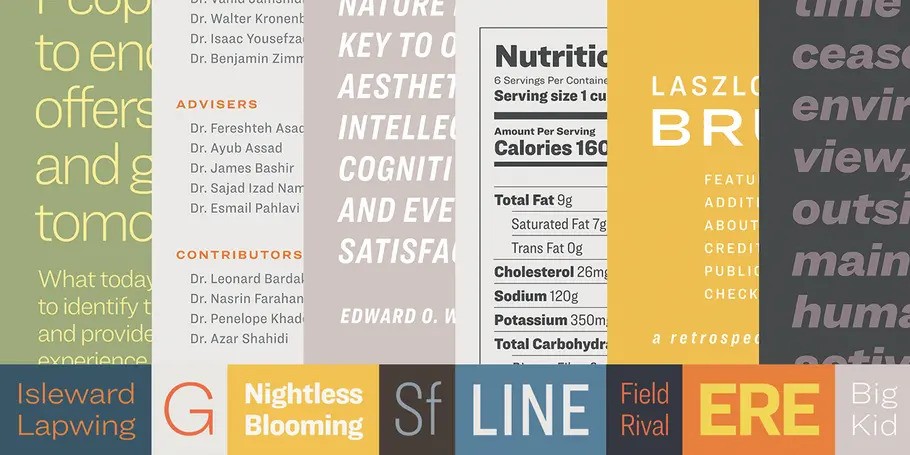Four Women That Rock The Type World: Personal Triumphs and Visionary Perspectives
Women have been a crucial part of design history, although they are in the spotlight only recently. However, they have been breaking down barriers, setting trends, and creating spaces for others and themselves in the field of typography for a long time now.
Typeroom presents the journeys of four remarkable women in the field of type design, succeeding in different fields, from business strategy to type design. We discussed their individual journeys, the difficulties they've encountered, and their outlooks for type design going forward.
Let’s meet Sara Soskolne, Creative Type Director at Monotype, Mary Catherine Pflug, who heads up Monotype’s Foundry Program, Kerry Squires, Senior Brand Designer and Marie Boulanger, Design Team Lead at Monotype too.Their stories demonstrate the strength of imagination, resiliency, and group efforts to support diversity in the typography sector.
Sara Soskolne, Creative Type Director, Monotype
TR: How did you start in the field of type design and what was your journey until today?
Although in hindsight I was always fascinated by words and letterforms, even as a little kid, as an undergrad I actually majored in visual art and philosophy and just fell into a part time graphic design career as a more gainful use of my skills while I was in school. But I quickly fell in love with type, so after about 5 years as a full time graphic designer for whom each project was increasingly just an opportunity to answer the question, “ooh which typeface should I use for this project” and then inevitably “hmm but then how would I change its stroke endings/give it oldstyle figures/make the caps smaller/…” I finally realized that having had zero design education to that point, maybe I should actually try to learn why letterforms look the way they do and how to make them.
That realization led me to the life-changing deep dive of a master’s degree in the early years of the Typeface Design program at the University of Reading, and then a year or so later to being hired at what was then Hoefler & Frere-Jones, where I had the profound honor of working closely with two of my greatest type design heroes. Within a few years I progressed into the role of Senior Designer, and then later eventually found myself leading the design team at Hoefler & Co until we were acquired in late 2021 — and now I’m a Creative Type Director at Monotype.
TR: What challenges did you have to overcome as a woman in the design field?
The earliest challenges I can think of had to do with having my knowledge and experience totally underestimated and dismissed by some of the men (they were always men) running the presses on books I’d designed when I went to do press checks, in a way that never happened to my male counterparts. Later, sometimes being the only woman in a room or on a team and occasionally not receiving the same respect that a male designer in the same role would have, even now and then having that classic experience of saying something and no one seeming to hear it until a man repeated or echoed it. You know, the usual!
But luckily in my case those experiences have been far more the exception than the rule. And overall, for far too long having been one of far too few women making type professionally, I’ve also had opportunities that other male designers who have a similar shyness and disinclination to the spotlight as I do might not have been offered. Which I think unfortunately is as it should be until the playing field is far more level, even though it means I have to constantly fight my introverted preference for staying behind the scenes — and as it should be for designers of colour as well, to encourage far more diversity of voices and tastes and experiences at the highest levels of this still all too white and male-dominated profession. Affirmative action fucking WORKS, even if slowly, and I just hope it can survive the current culture wars in this country.
TR: Can you predict the future of type design? Any current trends that you find interesting?
Definitely not. All we can do is observe trends in both design and culture as a whole and imagine where they might lead next, but I don't think anyone can predict the larger forces that shape them — like living through a pandemic or a genocide or the resurgence of white nationalism or the how the effects of climate change are playing out. Of course probably the biggest question to be answered right now is the impact that AI will have on pretty much everything, which truthfully I still mostly prefer to avoid thinking about!
The inevitable swing back to varied, maximalist typography and serifed designs these last few years after the long reign of the geometric sans is way overdue, and I am here for it. I still love a geometric sans too, just not for everything.
TR: What guidance would you give to an aspiring female designer?
To resist the cultural forces that are STILL telling girls and women to be perfect rather than brave, and to always try your damndest to do the opposite. I grew up as a relative tomboy with parents who told me I could be anything I wanted to be, and I still somehow managed to absorb this omnipresent and binary social message that teaches boys to be brave and girls to be perfect. Perfectionism is a skill that’s incredibly useful in typeface design, so in my case it can be both a superpower and an Achilles heel, but it's one I'd probably rather not have. And also to remember that we're all still very much stuck playing a game where not just the design of the board and the rules, but the game itself, were created by men — so to be mindful of that and try to subvert it whenever she can, to succeed on her own terms, and especially to think about how she would design it differently.
I would implore any woman, aspiring designer or not, to do her best to ignore those subtle and insidious voices telling her not to bother trying something because she might not do it perfectly, or because someone else might be better at the game, or perish the thought she might fail — especially when the loudest of those voices seems to be coming from inside of her — but rather to trust herself, and remember that trying and failing and trying again are the only way we learn, grow, become ourselves, make anything interesting, or ever get good at something. And most importantly, that the world needs to hear her voice too. I still have to remind myself of this every single day.
Kerry Squires, Senior Brand Designer, Monotype
TR: How did you start in the field of type design and what was your journey until today?
Throughout my career I have worked in design roles that are built from type and branding, within book cover design, magazine, editorial design and more recently, record covers. Typography is an integral ingredient of any creative project and I have witnessed it evolve so much over the past 15 years. I started my design career in year 7 at primary school when everyone made me draw the type title pages for their geography coursework, by hand. It was either that or Word Art. In all seriousness, this is when I realised type and graphic design existed and I was so excited by the prospect of creating my very own versions of magazine layouts, record covers and posters.
TR: What challenges did you have to overcome as a woman in the design field?
As a woman in the design field, for me, there’s always been an underlying feeling that you have to work ten times harder than male colleagues in order to gain respect and recognition, mainly because most work cultures still reward male values. Women sabotaging other women is also a lot more common than you think, probably due to the amount of competition that is instilled in male-dominated workplaces. This is definitely changing for the better and progress is being made, but there’s still a long way to go.
TR: Can you predict the future of type design? Any current trends that you find interesting?
There are a lot of current trends that are super interesting and almost a direct visual reflection of our current social landscape. Themes such as anti-establishment, activism and empowerment have been visible in intriguing ways. There also seems to be a huge focus on nostalgia and finding comfort in childlike joy. For example, PFA Studio’s typeface Pardon emulates the wonderful variety and spontaneity of handwriting and Frith Kerr’s logotype for North London’s restaurant Jolene was beautifully penned by Kerr’s six-year-old son. In terms of predicting the future, AI is the topic on everyone’s lips and will have a huge impact on type design in ways we probably can’t quite yet imagine.
TR: What guidance would you give to an aspiring female designer?
First, keep creating work that allows you to find your creative voice, without fear of judgment. This is certainly difficult to master, but it’s really important to ultimately make work that truly aligns with you and your values. Don’t let anybody define you by your gender. Don't ever feel silenced in the workplace because of your gender. Take. Up. Space!
Marie Boulanger, Design Team Lead, Monotype
TR: How did you start in the field of type design and what was your journey until today?
I was born with a creative fire. As a kid, I produced plays and costumes with my brother and our friends. I put together ladybug and terrarium exhibitions in our garden. I was even drawn to type, finding calm in the soothing movements and shapes as I covered pages and pages with drawings of letters. But I didn’t always know my creative dreams were possible for me professionally. I got nervous and instead started a degree in linguistics at University College London. I quickly realized that it wasn’t a good fit, dropped out, and started art school in Paris instead. It’s hard to know, sometimes, what shape your dreams will take. I actually got my original position at Monotype the boring way. I sent in my CV, got a call from a recruiter, and had a couple interviews. I do think the way I used social media and my public-facing work made a big difference, though. My new position as Design Lead was a massive career step, but I leaned heavily on other industry mentors and I grew into it. It has been a dream—one big thing checked off the bucket list! It really is a lot easier to give your time and energy to something that makes you happy.
TR: What challenges did you have to overcome as a woman in the design field?
For up-and-coming female designers, it can feel hard to break in. I’ve been very fortunate in my career. But when I started out, I found it really difficult to find support because there’s this misconception that design has to be competitive. It doesn’t. I really felt like I had to make it on my own. I was scared of asking for help. I would do things very differently now. I think I'd also be less scared to call out bad behavior. Things like leaders treating male and female team members differently, I take this very seriously now I have my own team to look after. It’s important to really harness your own network, even if you start slow and small. Even somebody who’s one degree removed from you, like a colleague of an old friend. Always try to get better at asking for help and recognizing who your allies could be.
TR: Can you predict the future of type design? Any current trends that you find interesting?
I'm not sure I can predict the future but I can try... Design spaces are always evolving and growing, but we're always going to need typography to show and communicate information. I'm sure there will be many different interfaces for us to play with in the coming years. I'm also predicting more tools and initiatives to combat gender bias in language through type design. If you mean aesthetic trends, then there are plenty and I'm not sure how durable they are. Right now I get the sense that people really want to play and experiment through typography, and are using it as much more than a medium. I love design projects where the typography is the whole concept, and I've seen a lot of those recently.
TR: What guidance would you give to an aspiring female designer?
Trust your intuition, make friends around you not just above you, be generous, be curious, be ruthless in the company you keep, and there is no way to find a signature style but the hard way. Through work, through failure, through success, through questions, and more importantly, through time
Mary Catherine Pflug, Monotype’s Foundry Program
TR: How did you start in the field of type design and what was your journey until today?
While my passion is on the business side of the type industry now, I got my start on the design side, as a type designer. I was lucky enough to attend an arts high school. In a graphic design class, an idea stuck with me: type design as a tangible way for art to reach people all over the world and in any language through an intangible medium. A wonderful paradox! There, I created my first font, and released it to MyFonts. In college, I went on to study business but put together my type education piecemeal at the same time, with an array of internships, workshops, mentorships, volunteering at type conferences, online design classes, and more. I probably learned the most by having deep conversations with people immersed in the industry, passionate about their various perspectives and opinions on type.
TR: What challenges did you have to overcome as a woman in the design field?
When considering this question, it’s easy to point to the fact that there are fewer women in type than men, and there is plenty of research and psychology at this point proving how that makes it more challenging for women in any industry where that imbalance exists. I noticed this, but to me it wasn’t something to overcome but rather an opportunity; it just meant that I needed to become a ‘woman in the design field’, so the next generation doesn't see that imbalance. Looking back I have been and continue to be surrounded by men and women helping the next generation in type. I am fortunate to have met and learned from amazing women in type like Louise Fili (legendary designer) Carol Wahler (Director of the TDC) and Joyce Ketterer (Owner of Darden Studios). I can say with confidence though that diversity is growing in type; in my role now I interact with our network of over 5,000 type designers around the world and can see this diversity growing.
TR: Can you predict the future of type design? Any current trends that you find interesting?
I wish! The one thing I can predict is that people will continue to love and need unique fonts. Fonts are the foundation of visual identity and communication. Fonts are like oxygen (a fantastic phrase coined by my teammate Charles Nix).
TR: What guidance would you give to an aspiring female designer?
I have the same advice for aspiring male and female designers: learn everything you can through conversations, and be super curious. Learning about seemingly unrelated topics will spark a connection. Do not be afraid!
Tags/ typography, type design, interview, interviews, women
 1.jpg)

_page-0009.jpg)

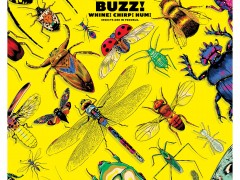

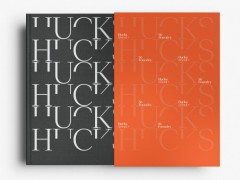


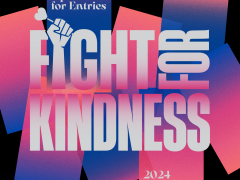


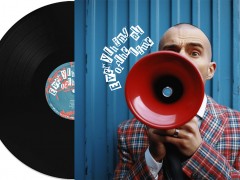
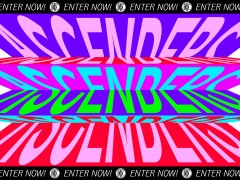


.jpg)
